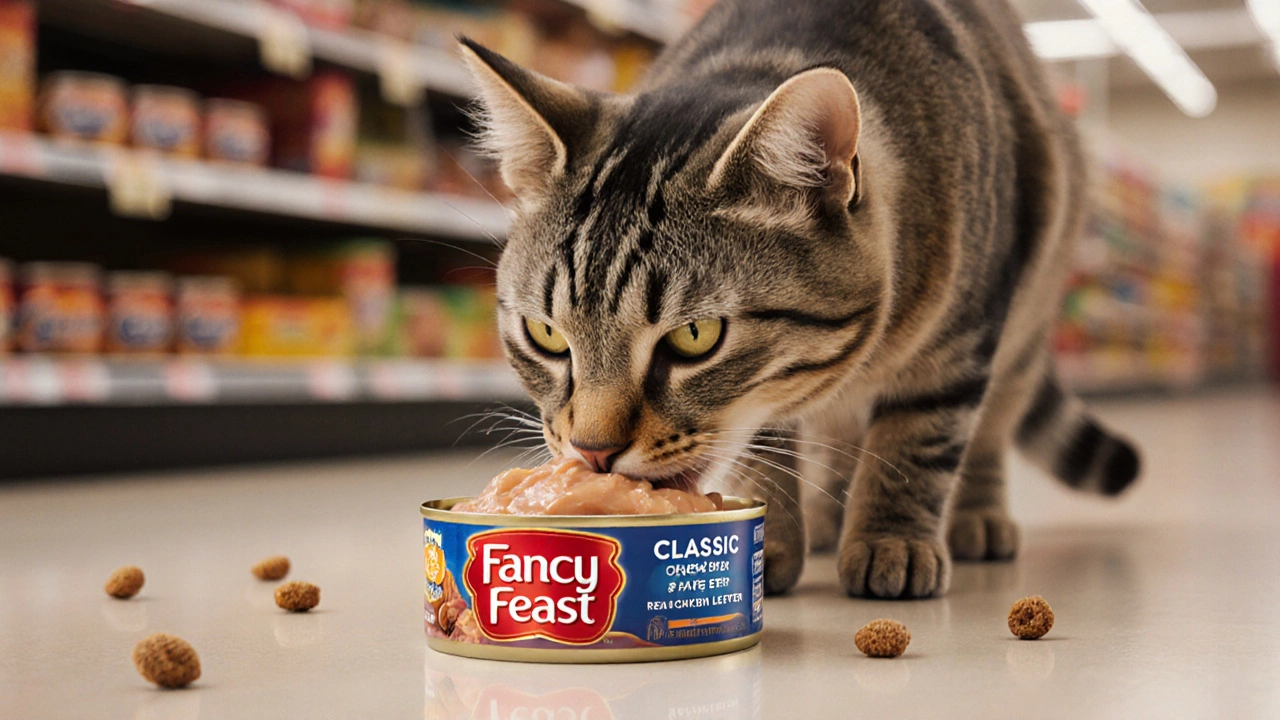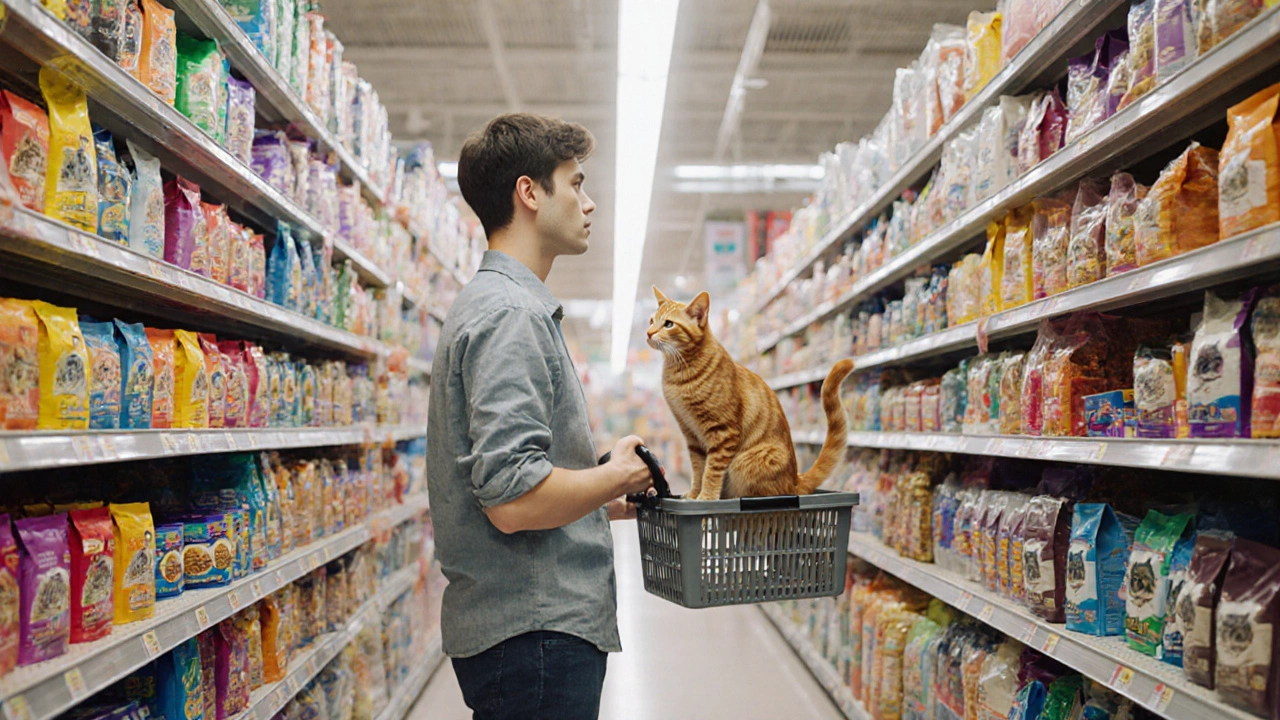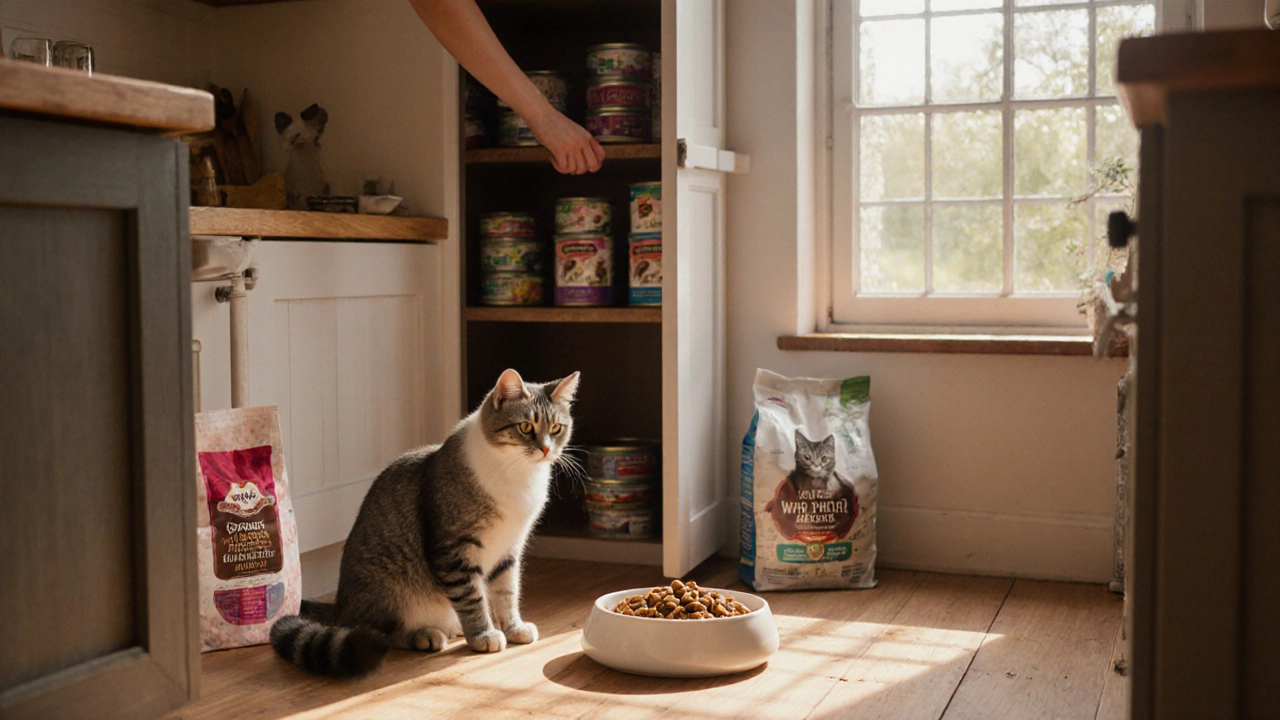Best Cat Food – How to Choose the Right One for Your Cat
If you’ve ever stared at the endless rows of tins and bags in the pet aisle, you know picking cat food can feel overwhelming. The good news? You don’t need a degree in nutrition to make a solid choice. In a few minutes you can spot the options that give your cat the protein, vitamins, and taste they crave.
First, think about your cat’s life stage. Kittens need food packed with calories and DHA for brain growth, while seniors benefit from joint‑supporting nutrients and easier‑to‑digest protein. Knowing whether you’re feeding a spry kitten, a busy adult, or a mellow senior narrows the field dramatically.
What Makes a Cat Food the Best?
Look for three core things on the label: a high meat content, named animal proteins (like chicken or salmon), and minimal fillers. Cats are obligate carnivores, so they thrive on real meat first, not on corn or wheat that often hides in cheaper blends.
Second, check the guaranteed analysis. Aim for 30‑40% protein, 10‑15% fat, and under 10% carbohydrate. Too many carbs can lead to weight gain and urinary issues.
Third, watch for added goodies. Taurine, omega‑3 fatty acids, and antioxidants are key for heart health, a shiny coat, and strong eyesight. Brands that list these nutrients naturally, rather than tacking them on at the end, usually have a better formula.
Top Picks for Different Needs
Dry food lovers: If you prefer kibble, go for a grain‑free formula with at least 35% meat‑derived protein. Look for brands that use real fish or poultry as the first ingredient and avoid “meal” or “by‑product” jargon.
Wet food fans: Canned meals often have higher moisture, which helps keep your cat hydrated. Choose varieties that contain over 80% meat and low sodium. Wet food is especially good for cats with urinary tract concerns.
Budget‑friendly options: You can still get quality without breaking the bank. Look for reputable store brands that spell out their protein sources and have third‑party testing seals. Buying in bulk and rotating flavors keeps costs down and your cat interested.
Special diet needs: For cats with allergies, grain‑free and novel‑protein recipes (like duck or rabbit) are worth trying. Senior cats often appreciate foods with glucosamine and joint‑support blends. Always introduce a new diet gradually to avoid tummy upset.
Finally, trust your cat’s palate. If they sniff, paw, and eat with gusto, you’re on the right track. If they turn their nose up, try a different protein or texture. Remember, the “best” cat food is the one your feline enjoys and that meets their health needs.
Keep a small notebook of the foods you’ve tried, the brand, and any changes you notice in weight, coat, or energy. Over time you’ll build a personal cheat sheet that saves you trips down the aisle and keeps your cat thriving.
Posted By Bryndle Redding On 27 Nov 2025 Comments (0)
Is Fancy Feast Okay for Cats? Vet-Approved Facts You Need to Know
Fancy Feast isn't all bad, but many formulas are low-quality. Learn which varieties are safe for cats, what to avoid, and better alternatives that won't break the bank.
READ MOREPosted By Bryndle Redding On 15 Oct 2025 Comments (0)
The #1 Best Cat Food in 2025: Expert Review and Comparison
Discover the #1 best cat food of 2025, why it tops the list, how it compares to other top brands, and expert tips for choosing the perfect diet for your feline.
READ MOREPosted By Bryndle Redding On 28 Sep 2025 Comments (0)
Best Cat Food: What to Feed Your Feline for Optimal Health
Discover the top cat food options, learn essential nutrition basics, and get a step-by-step guide to choosing the best diet for your feline's health.
READ MORE

